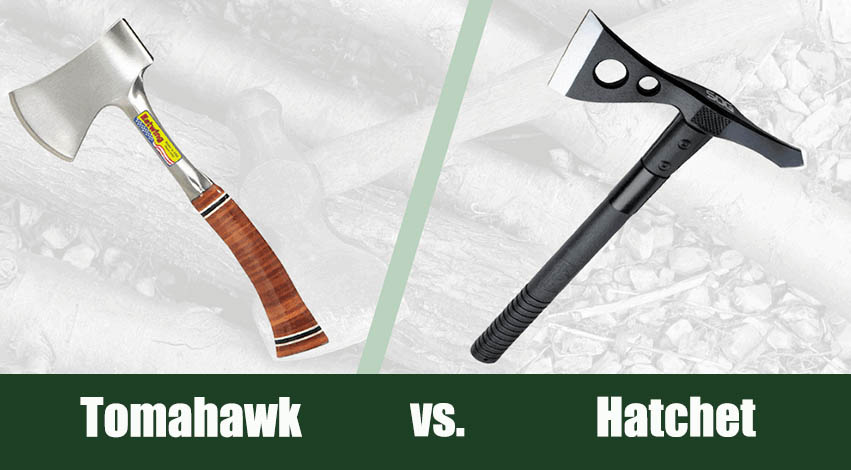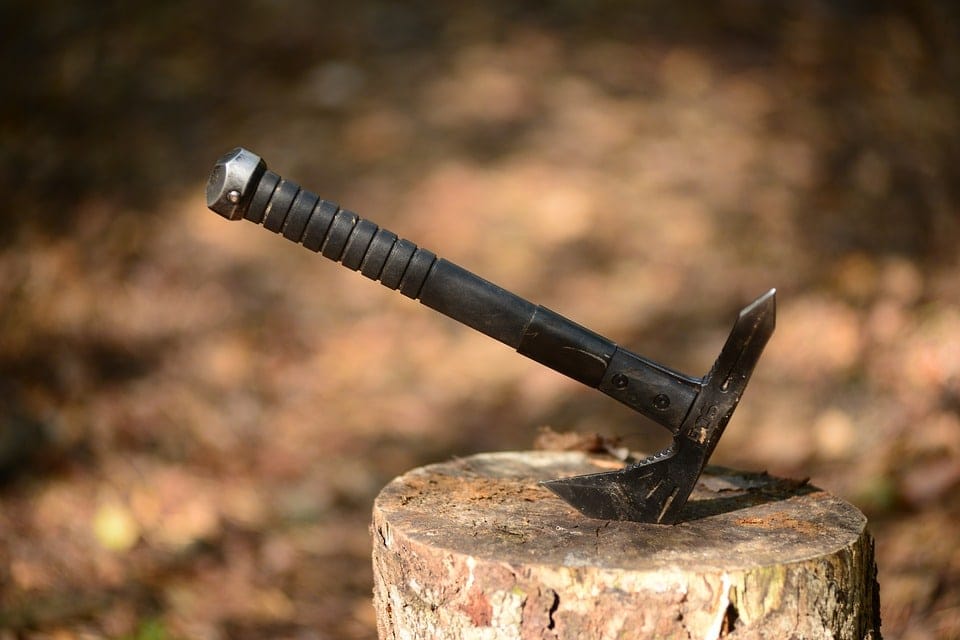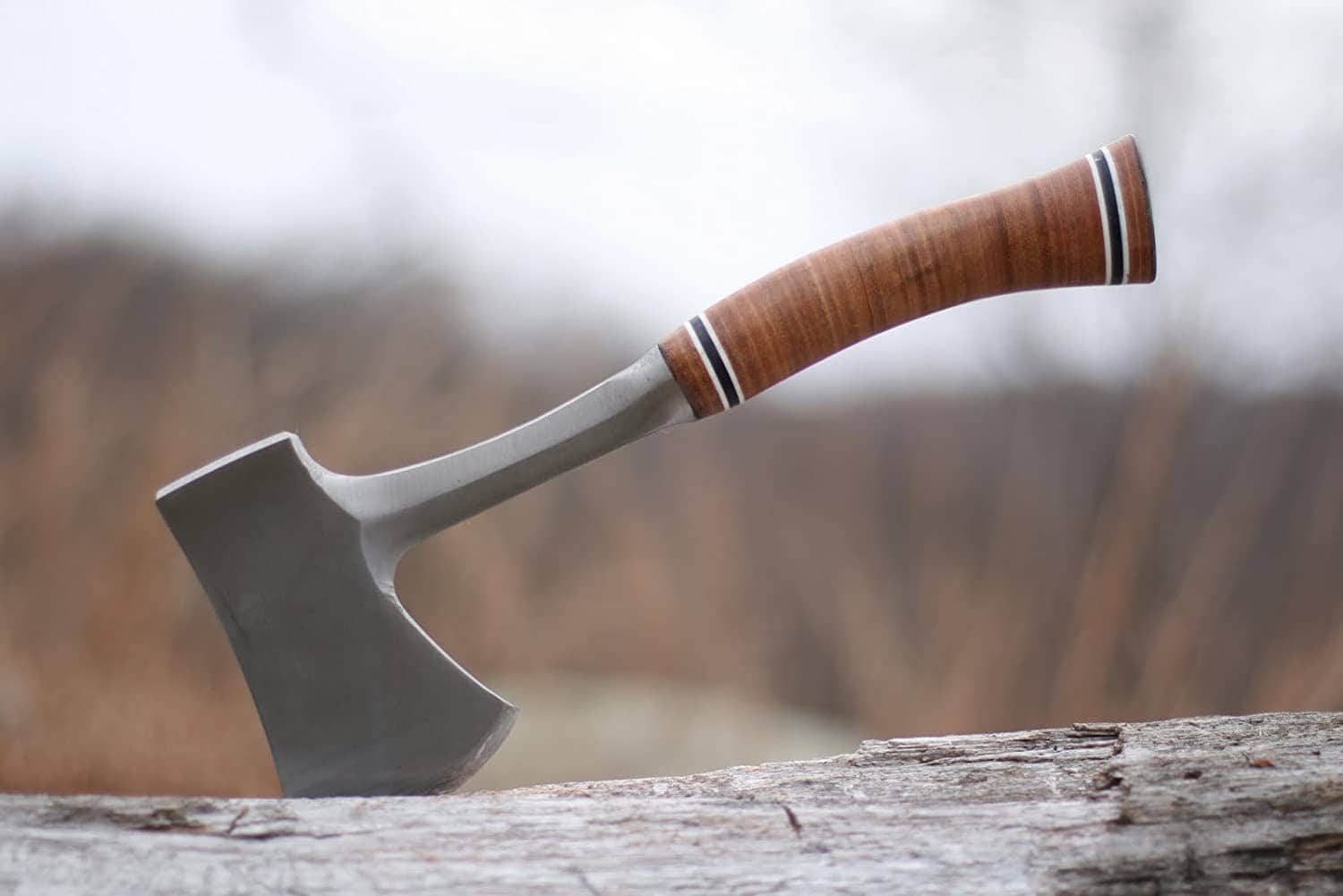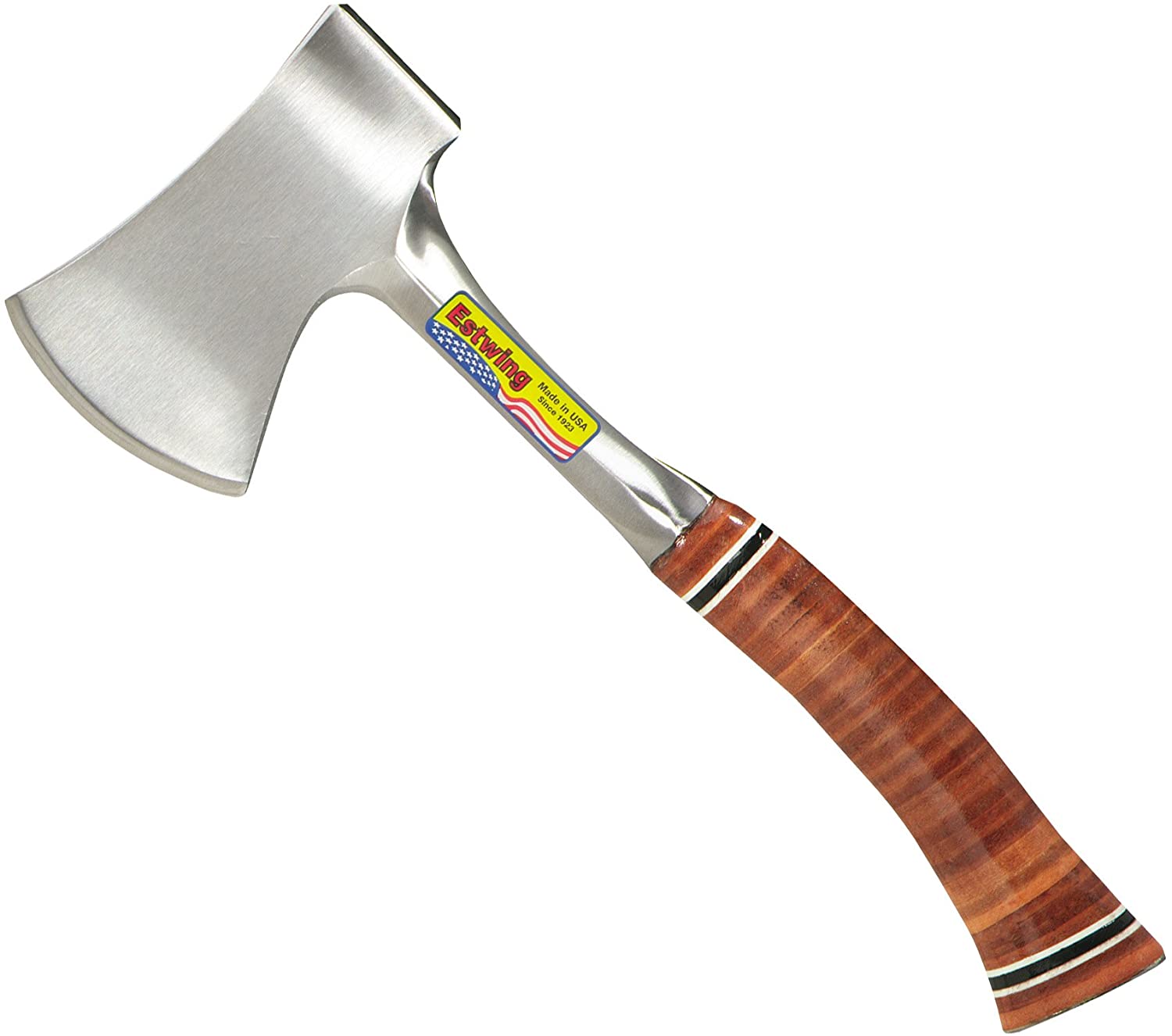Tomahawk vs Hatchet: What’s the Difference?
-
- Last updated:


You might wander through a sporting goods store looking for a small, hand ax for camping or hunting. You’ll probably come across two that look very similar, with small noticeable differences. One has a bigger head, but the other has a longer handle. One is lighter, while the other seems to be sturdier. Which do you choose?
The answer is in the details. If you are going for heft to chop wood, physics dictates the heavier of the two. However, if you have it in your mind to field strip a rabbit on your trip for a lovely evening meal by the campfire, then a lighter blade might do nicely. And thus, we’re presented with the tomahawk versus hatchet conundrum. Let’s break it down.

Uses of the Tomahawk
Today’s standard tomahawk is a modified version of the one carried by Native Americans during the times of the early European settlers, and well before. It is featured predominantly in many tribal cultures through the Americas for its versatility and lightweight killing power when hunting.
They can be used as tools, but function well when thrown or used to block blows from an attacker. And they have little weight, except in the balance points of the removable head, so they fly quickly and can be wielded with a significant amount of force from the user.

Features of the Tomahawk
Today’s tomahawk is not unlike the original version, save some minor tweaks, like the head shape and handle materials. And the heads are still thin like in the classic versions, but with the evolution of blacksmithing, we now have more defined versions of the original head designs.
The three head styles are:
- Single blade: One-sided blade, looking like a thin hatchet
- Double blade: Less common, this has a sharp blade on both sides, like a double-sided ax
- Single with spike: This one has a blade on the one side, and an additional beard section fashioned to a point for penetrative purposes
One thing this really sets this apart from the hatchet is the removable head. The long slender handle allows it to be removed and replaced as needed. Some versions have been fused into one piece, but they are not very common. Often, a rope is added to the handle to keep the head from slipping.
Tomahawk Pros & Cons
- Lightweight
- Removable head
- Three blade options
- Two handle choices
- Suitable for hunting and wood cutting
- Not heavy enough for certain work applications

Uses of Hatchets
The hatchet is more for work than to be used on the hunt. Its head is heavy, its handle is thick and bulky, and it would just be too unwieldy for hunting. It has a thicker head, capable of splitting a log with ease, and its short handle gives the user significant power and control.
And this head is permanent. It remains on the handle for the life of the hatchet, even during sharpening. Can it be used as a weapon? Yes, it can. But thrown, it is more likely to bludgeon its target than impale it like the tomahawk.

Features of the Hatchet
Because a hatchet is a tool, not commonly a weapon, it will always have a head heavier than the handle, and that is especially true today. Most modern hatchets are either full tang with a lightweight wood overlay handle, or the handle is made of a light material like fiberglass.
While there are double-sided hatchets, for safety, most have a hammerhead on the other side, if anything. Hatchet handles have a curve to them, unlike the tomahawk straight handle, and they are ergonomic to prevent slipping as the hand gets sweaty during use
Hatchet Pros & Cons
- Good weight for working
- Ergonomic handle
- Thick blade for splitting wood
- Handle and head permanently connected
- Not for hunting
- Handle only comes in one standard length
Your Next Tomahawk
Now that you know the difference, we have our favorite tomahawk and some details about why this should be your new tomahawk for all your outdoor adventure needs.

The SOG Tactical Tomahawk has everything you want in a slicing and dicing, offensive and defensive tomahawk, plus a few perks that make it a fantastic find. It is still a straight handled model, but the handle is made of composite material, fastening near the head for removal if needed.
It has a hammer ax edge and a sharpened spike on the back. Overall, it is just shy of 16 inches tall, weighing about 24 ounces, a perfect weight for throwing. For a survival and emergency tool, it can’t be matched. And it comes with a nylon sheath.
- Lightweight
- Very sharp
- Spike
- Sheath
- Short tang
Your Next Hatchet
If the hatchet is more to your liking it’s because you are ready to get to work in those challenging areas where a full-size ax just can’t be swung with force. The short handle and heft are perfect for that thick underbrush and those small trees. We have just the hatchet for you.

The Estwing Sportsman’s Axe is from one of the best hammer companies on the market with a legacy of excellence. It has the best hatchet features anyone in the field might need. From its solid tang the length of the body for maximum striking power to its construction from the finest American steel, this hatchet will get the job done.
- Full tang construction
- Quality steel
- Leather grip
- One-piece forge
- Cheap handle

Conclusion
Before picking which one you want, be sure you know how it will be used most often. Get a task list in your mind, make some plans, and have a reasonable idea of whether one will work better than the other.
If you chop wood more than you hunt, the hatchet is a clear choice. If you love to sling your tomahawk at a hunk of wood for fun, then you know what you need. It is better to have the option with more perks than a niftier looking one with less.
Contents
